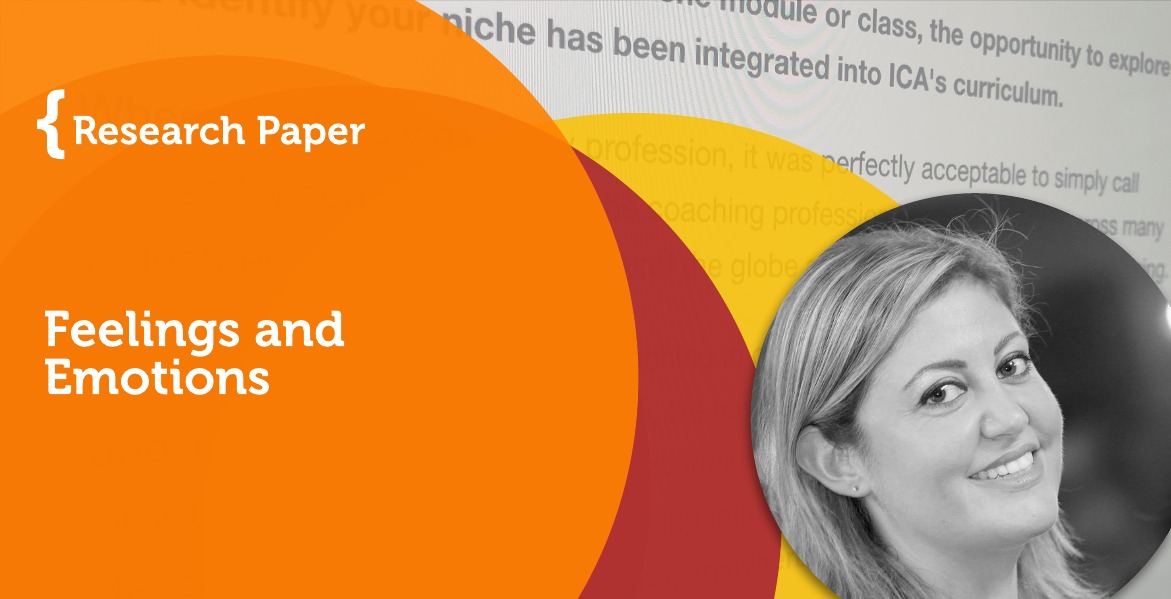 Research Paper By Solange Corm
Research Paper By Solange Corm
(Career Coach, UNITED ARAB EMIRATES)
Coaching is a powerful tool for personal and organizational development and we believe that this will enable significant growth for individuals within this organization and for our organization as a whole.
It is vital for us to keep the talent flowing along the leadership pipeline. Through investing in our people, we can ensure that the right people are equipped with the necessary skills and knowledge to fulfil the roles of the future.
The WHY! Added Value
There are many advantages to having a structured coaching program for all involved. Some of the benefits for the organisation, coach and clients are listed below.
Benefits for the organisation:
Coaching will:
Benefits for coaches
Coaching will:
Benefits for coaches/clients:
Coaching will:
Target Audience/clients: Current Employees in my organization from all levels (Team Member level up to Director level) (particularly Female and Youth)
Description of my audience: Any employee particularly female or youth who want to reach their full potential in their field, get a leg up in the competition, grow his/her career, move to the next level, get promoted, looking to market themselves to climb the career ladder in a healthy way.
“The overall purpose is to provide help and support for employees in an increasingly competitive and pressurised world to take responsibility and control of their own learning and development in order to:
How will I help them: I will help them assess their strengths, weaknesses, and interest to empower them to determine what they want to do and how they want to do it. As hospitality experienced professional, I will be addressing issues like time management, leadership, organizational issues, challenges facing women in the workplace, overcoming unconscious bias, create a work-life balance, inspire and empower them with self-esteem and self-worth and to set goals and develop a plan to meet those goals.
I will spend a lot of the first sessions with my client listening to get to know their struggles, as well as hopes and dreams. I will help them manage expectations by determining what they hope they will get out of the coaching experience.
I will then work with them to pinpoint strategies that will help them physically, emotionally, and mentally become the best person they can be and achieve the goal they have set for themselves and for this coaching journey.
Tools and resources used: SHL, a leading online assessment company that provides a wide range of various psychometric tests and online assessments. For my coaching model, I will be using the following:
Employee Motivation Report
This report describes the factors that are likely to have an impact on the client’s motivation at work.
It provides a high-level summary of the client’s motivators and demotivators followed by more detailed information on what is likely to motivate and demotivate the client at work including tips and suggestions on how to keep him motivated.
This report is based on the client’s responses to the Motivation Questionnaire (MQ). The accuracy of this report depends on the frankness with which he answered the questions as well as his self-awareness.
This report has a shelf-life of 18-24 months and should be treated confidentially. If there are major changes in the client’s life or work he should complete the MQ again.
OPQ – Occupational Personality Questionnaire
This report includes information from the Occupational Personality Questionnaire TM (OPQ32). The use of this questionnaire is limited to those people who have received specialist training in its use and interpretation.
The report herein is generated from the results of a questionnaire answered by the respondent(s) and substantially reflects the answers made by them. Due consideration must be given to the subjective nature of questionnaire-based ratings in the interpretation of this data.
The report details 3 areas listed below:
Leadership report
“The framework used in this report differentiates management and leadership in terms of the widely recognized distinction between transactional and transformational styles.
This report estimates the individual’s potential using research-derived predictions from the responses they gave to the Occupational Personality Questionnaire (OPQ32).
During feedback explore with the individual how they may have utilized strengths or overcome challenges in the pursuit of success[i].”
A deeper understanding of their personal attributes will help to identify their fit to different leadership roles and appropriate approaches to further build their leadership skills.
“The SHL Leadership Model covers four leadership functions critical to leadership effectiveness in any organization. Each of these four leadership functions can be considered in terms of a management focus and a leadership focus.
Each leadership function is associated with two competencies, based on the SHL Great Eight Competency Factors. One competency is more relevant to a management focus and one to a leadership focus.[ii]”
PS: the choice of use of every assessment and relevant report depends on each situation and each session and the goal of the session based on the client goals and what he/ she is trying to achieve. It is also depending on the level of each client ie: entry level vs. Supervisory vs. Management level vs. Senior leadership level.
Your Personal Leadership Brand exercise – Harvard business school
“The leadership Brand conveys your identity and distinctiveness as a leader. It communicates the value you offer. If you have the wrong leadership brand for the position you have or you won’t, then your work is not having the impact it could.[iii]”
It is a future-focused exercise to distinguish what you want to be recognized as a leader…
Resources
[i] SHL Group Limited. (2011, August 30). OPQ The Leadership Report. Retrieved from
[ii] ibid
[iii] Cooke, A. (2017, June 29). 5 Steps to creating your leadership brand. [Blog post]. Retrieved from https://blueskygpsexecutiveinsights.com/category/personal-profile/